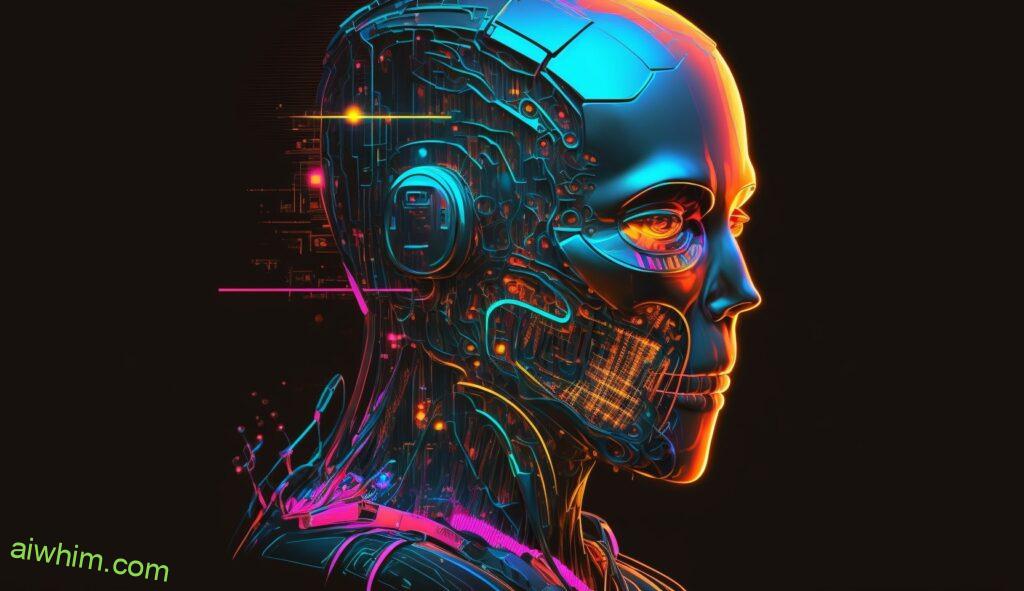Are you an actuary? If so, it’s time to pay attention. Artificial intelligence is making its way into the workforce and could soon replace your job as an actuary. With AI technology continuously advancing, more organizations are turning to this form of automation in order to cut costs and increase efficiency. But what does that mean for actuaries around the world? In this article we’ll explore whether or not AI will eventually replace your job as an actuary – and if so, how can you prepare yourself for such a change?
Automation through artificial intelligence is no longer just a concept; instead, it’s quickly becoming a reality. As organizations start leveraging this new technology they may find themselves relying on AI rather than human labor to complete tasks previously done by people like actuaries.
It’s true that there are some benefits associated with automating certain tasks using artificial intelligence – but at what cost? Will employers turn their backs on experienced actuaries in favor of automated systems? Or can skilled professionals co-exist alongside these new technologies without losing their jobs? We’ll address all these questions and more within this article about whether or not AI will replace your job as an actuary.
Before we start, uncover the truth about actuary jobs and their position on the list of 100 occupations vulnerable to AI. Don’t miss our study!

Here’s what we’ll cover today:
What Is An Actuary?
An actuary is a professional who evaluates risks and uses mathematics, statistics, probability, and financial theory to analyze the potential for loss in any given situation. It’s an exciting career choice with attractive salaries. Actuaries use their expertise to help businesses make informed decisions about insurance plans, investments, and other aspects of finance. They also advise clients on how to best manage risk while maintaining profitability.
Becoming an actuary requires extensive education and training. Many actuarial professionals have bachelor’s degrees in math or related fields such as economics or business administration. Additionally, most states require that actuaries pass exams administered by The Society of Actuaries (SOA) before they can become certified professionals.

Job Responsibilities Of An Actuary
Actuaries are highly skilled professionals who play a vital role in the financial sector. Their responsibilities involve analyzing data, interpreting trends and making informed predictions about future events related to insurance, investments and pensions. They also use sophisticated mathematical models to assess potential risks associated with these activities.
The main job of an actuary is to calculate the cost of providing coverage for life or medical policies, as well as annuities and pension plans. This involves evaluating past performance, modeling possible scenarios and predicting future outcomes based on their findings. An actuary will also provide advice on how best manage risk by developing strategies that minimize losses due to unforeseen circumstances. In addition, they must develop financial forecasting models which can help them accurately predict investment returns over time.
Overall, actuarial duties require a high level of expertise in mathematics and statistics combined with sound business acumen in order to make accurate decisions that protect people’s finances while allowing organizations to achieve their goals efficiently. It is unlikely that artificial intelligence could completely replace this function anytime soon given its complexity; however, AI may be able to assist existing actuaries by performing certain tasks more quickly and accurately than humans currently can.

What Is Artificial Intelligence (AI)?
Artificial Intelligence (AI) is like a complex network of interconnected neurons running through the virtual world. It’s made up of various components such as machine learning, deep learning and natural language processing that are used to interpret data and make decisions. AI helps machines to think, act, understand and learn in ways similar to humans. With this technology, computers can now perform tasks that were once only possible with human intelligence.
AI has become increasingly popular over recent years due its ability to automate processes and reduce manual labor by cutting down the time it takes for employees to complete certain tasks. This leaves more time for workers to focus on other areas of their job while also giving them greater freedom than ever before. For example, a company may use an AI-driven system to analyze customer reviews or predict demand trends rather than having people manually review every single comment or survey responses themselves. In addition, AI can be used for predictive modeling which allows businesses to anticipate what customers will want next so they can better meet their needs. As AI continues to develop rapidly and become integrated into our everyday lives, it’s clear that there are endless possibilities when it comes to how we interact with machines.

Historical Use Of AI In The Workplace
With the emergence of AI in the modern workplace, it is important to understand its historical use. Machine learning algorithms have been used for decades to analyze data and make predictions. Predictive analytics has evolved from early computer-based models that were able to simulate different outcomes based on given parameters. Natural language processing technology also developed significantly over time, allowing computers to process human language effectively.
In recent years, AI has become even more integrated into everyday life due to rapid technological advancements. This integration has allowed businesses to automate many mundane tasks such as customer service interactions that used to require manual labor. In some cases, entire roles can be replaced by automated systems powered by artificial intelligence which are better suited for certain applications than humans are. For example, automobiles with autonomous driving capabilities have begun to replace taxi drivers in many cities around the world. AI is also becoming increasingly present in fields such as finance where decisions made using machine learning algorithms often outperform those made by traditional actuaries or analysts.
As we continue exploring the possibilities offered by AI, one thing remains clear: machines will never fully replace humans but they can certainly enhance our lives and work environments in a number of ways. By leveraging advances in predictive analytics and natural language processing technologies, organizations can increase their efficiency while freeing up resources so employees can focus on higher value activities like creative problem solving and strategic decision making.

Benefits Of AI For Businesses
AI offers businesses a range of benefits that can greatly increase efficiency, cost savings, and automation. With AI technology, companies are able to automate processes with greater accuracy than ever before. This means they can save time on manual tasks, freeing up their employees to focus on more meaningful work. Additionally, the use of AI allows for more accurate data analysis which can help business leaders make better decisions when it comes to strategy and resource allocation.
The cost savings associated with AI are also significant. By automating mundane tasks such as customer service inquiries or data entry, companies are able to reduce labor costs while still maintaining consistent quality standards. Furthermore, by using algorithms and machine learning, businesses can streamline processes and cut down on unnecessary steps that may have previously been required to complete certain jobs. Through this process of optimization and automation, companies are able to realize substantial cost reductions over time.
In short, AI provides numerous advantages for businesses looking to improve efficiency and reduce operating expenses. From automated customer services to streamlined processes and accurate analytics – there is no doubt that AI has revolutionized how we do things in the corporate world today. It’s clear that embracing these new technologies will be key for any organization hoping to stay competitive in the future.

Potential Disadvantages Of Using AI For Businesses
Although AI has the potential to revolutionize businesses, there are some major drawbacks that organizations should consider before making the switch. To put it bluntly, utilizing AI can be incredibly costly and risky! Here’s a few of these issues:
- Initial Purchases: Investing in high quality AI technology is often expensive. Companies must weigh whether or not they will make their money back with increased efficiency and profits within an acceptable amount of time.
- Maintenance & Updates: The cost for maintaining and upgrading hardware/software needed for AI operations can add up quickly over time.
- Security Risk: No matter how secure your system may seem, hackers still have access to sensitive data when using AI. It’s important to think about any security vulnerabilities that could arise from implementing this kind of advanced technology – especially if you work in industries such as healthcare or finance where customer privacy is key.
On top of all this, businesses need to take into consideration the fact that algorithms powering artificial intelligence are only as good as the data used to train them. If there’s bias in the training set then those biases will flow into decisions made by the algorithm itself. This means companies need to ensure that their datasets aren’t exhibiting any hidden discriminatory patterns which could lead both customers and employees down an undesirable path.
Clearly, while introducing new technologies like Artificial Intelligence into business processes holds great promise, it also carries significant risks associated with cost and security that shouldn’t be overlooked or underestimated. Therefore, cautious research and planning should always come first when considering investing in AI!

Predictions For Future Integration Of AI Into Business
As businesses continue to explore the potential of AI, there have been a multitude of predictions regarding what is in store for its future integration into business settings. In recent years, AI adoption has increased significantly and many companies are beginning to use it for tasks such as customer service automation and data analytics. It’s likely that this trend will only increase over the coming years, with more organizations using artificial intelligence to improve their efficiency and productivity.
Businesses must consider how best to integrate AI solutions within their operations. This includes understanding which areas could benefit from implementation, creating strategies for implementation, and understanding the implications for employees who may be displaced due to automation. Additionally, organizations should plan ahead by considering any potential legal or ethical issues that may arise when incorporating an AI solution into their workforce.
The increasing availability and affordability of AI technology means that it can now be used in a range of different sectors – not just tech-focused ones – allowing even small businesses access to powerful tools they wouldn’t otherwise have had. Furthermore, advances in deep learning algorithms mean that applications can become increasingly sophisticated, leading to better decision making capabilities and improved performance outcomes than ever before. As we look towards the future, it appears clear that AI will play an integral role in many aspects of business operations worldwide.

Impact On Current Actuarial Roles And Tasks
The impact of AI on current actuarial roles and tasks is nothing short of revolutionary. As the rise of automation sweeps through virtually every industry, it’s no surprise that those working in finance are feeling the effects as well. We can almost hear the rumbling thunder of change as long-held assumptions about how we do business begin to crumble beneath our feet.
For actuary professionals, this uncertainty has only been compounded by the increasing presence of intelligent machines in their field. From managing risks to predicting future outcomes with unparalleled accuracy, there’s no denying that AI will have a profound effect on how they work going forward. With task automation becoming more commonplace each year, many fear for their jobs’ security in an increasingly automated world.
At present, though, most human-based positions remain safe from total replacement due to certain cognitive aspects like creativity and intuition which AI still lacks. Instead, it appears that job roles may be more affected by changes such as increased reliance on technology or shifts away from traditional ways of thinking – both of which could require retraining or further education for existing employees who wish to stay competitive and relevant within their profession. However, only time will tell whether these new trends will become essential enough to eventually supersede manual labor entirely.

Challenges To Overcome With AI Adoption
The implementation of AI into an organization brings with it many challenges. Chief among them are the hurdles that come from change management, budgeting, and data security.
- Change Management: Introducing any new technology requires a period of transition for employees to become accustomed to the new system. This involves not only training workers on how to use the new technology but also developing processes that support its usage. Additionally, organizations should be mindful of potential resistance from stakeholders who may fear their jobs are at risk due to automation.
- Training: Employees must be trained on how to use the technologies correctly and efficiently in order to maximize their benefit.
- Resistance: Organizations need strategies in place to mitigate any potential pushback or uneasiness over job displacement caused by AI adoption.
- Budgeting & Data Security: Beyond just accounting for the cost of purchasing and implementing the software, organizations must factor in additional expenses such as server space and maintenance fees associated with using third-party applications like cloud storage services. Moreover, IT teams must ensure all systems remain secure against cyber threats which could lead to sensitive data being exposed or stolen.
In addition to these considerations, businesses looking to adopt AI should think about other aspects such as scalability and customer service integration when making decisions about what type of solution would best fit their needs. With careful planning and thoughtful execution, companies can successfully implement AI without sacrificing efficiency or profits while still remaining compliant with industry regulations governing data privacy and safety concerns.

Training And Education Requirements For Working With AI
As AI increasingly infiltrates our workplaces, understanding and utilizing the technology has become a necessity. Training and education requirements must be met in order to successfully work with AI.
The first step is to acquire knowledge of how AI works. This can be done through research or attending workshops that provide an overview of the subject matter. Additionally, one should possess a basic level of technical aptitude, as well as problem-solving skills. Those who want to go deeper into their studies may consider taking courses related to artificial intelligence such as machine learning and robotics engineering. Having experience working with data analytics software is also beneficial for those interested in pursuing a career involving AI applications.
In addition to these academic qualifications, it is important for professionals to understand ethical considerations involved when using this technology — both from a legal standpoint and from the perspective of corporate responsibility. It’s essential that employees are aware of potential risks associated with any actions taken while working with AI so they can effectively mitigate them accordingly. There are numerous resources available online and offline which address these topics in detail, giving insight into best practices when dealing with sensitive information or making decisions on behalf of customers and stakeholders alike. Ultimately, proper training and education will ensure that all individuals have the appropriate skill set needed for successful integration of AI within their organization’s operations.

Ethical Implications Using AI In Financial Decision-Making
Humans and machines, living side by side in harmony? A utopian dream for some, a dystopian nightmare for others. The use of AI in financial decision-making has raised ethical questions around the world, as it threatens to displace humans from jobs they have held for decades. But could this new technology provide us with an improved way to make decisions? Could it actually be better than human intuition when making complex financial decisions?
The implications of using artificial intelligence (AI) in finance are far reaching; its potential to create efficiency gains is unparalleled. It can process vast amounts of data quickly, accurately interpret events without bias or emotion, and even predict future outcomes with higher accuracy than that of any individual. This means that AI can help automate processes and improve decision-making across many industries such as banking, insurance and investment management.
However, these benefits come at a cost – there are also risks associated with relying on algorithms to power our financial systems instead of experienced professionals. There may be unforeseen consequences if something goes wrong, leaving individuals worse off than before. Moreover, we don’t yet know how much autonomy should be given to AI when making ethical financial decisions – after all, who will be accountable if things go awry? Consequently, governments need to carefully consider how best to regulate the use of AI so that it serves the interests of society while protecting human rights and freedoms.

Possibility For New Career Opportunities With AI Adoption
Having discussed the ethical implications of using AI in financial decision-making, let us now consider the possibilities for new career opportunities that may arise from its adoption.
AI applications are increasingly becoming more sophisticated and have made it possible to automate a number of processes. For example, machine learning algorithms can be used to quickly analyze large amounts of data or identify trends that would take an average person days or weeks to uncover. The automation provided by these technologies also frees up time for people who would otherwise be tied to manual tasks so they can focus on creative projects and problem solving instead. This could create openings for new roles such as software developers, artificial intelligence engineers, and data scientists.
The potential impact of AI is far reaching and could bring about significant changes in many job markets including finance. It is likely that some actuarial positions will eventually become automated but this does not necessarily mean that all actuary jobs will disappear entirely. Instead, there are opportunities for human intervention at certain stages of the process – allowing professionals with unique skillsets to bridge gaps between technology and traditional business operations. As AI becomes more prevalent across industries, those who are willing to adapt their skillset accordingly may find themselves in high demand as well as potentially increase their earning power significantly.

Best Practices Preparing For A Changing Workplace Landscape
As the workplace landscape shifts and evolves, it is important to consider how best to prepare yourself for a future that could potentially involve Artificial Intelligence (AI). Change management in this context calls for preparation and proactive effort. Here are some key best practices:
- Plan ahead: Keep abreast of new technologies and changes in your industry, so you can remain competitive.
- Develop skills: Be proactive about developing additional knowledge or certifications related to AI.
- Networking & Collaboration: Connect with peers who have experience dealing with change management and AI. Learn from them and collaborate on projects together.
- Embrace Flexibility: Employers may need employees who are willing to adjust their roles as needed; embrace flexibility within your job function whenever possible.
By following these practices, you will be better prepared for whatever comes next—whether it’s the introduction of more sophisticated AI tools or simply adapting to changing managerial approaches. With an open mind and perseverance, you’ll be able to navigate any professional challenge thrown your way in the ever-evolving world of work.

Guidelines For Effective Change Management Strategies
As the workplace landscape continues to evolve, it is essential for organizations to have effective change management strategies in place. The implementation of successful change management initiatives can help reduce risks and ensure organizational success when introducing new processes or technology. To achieve this end, businesses should follow guidelines that will lead them through the process of implementing an effective strategy.
The first step when developing a change management strategy is planning. Businesses need to consider all aspects of their operations and how they will be impacted by changes before making any decisions. This includes understanding stakeholders’ needs, setting goals, creating timelines, and determining resources that are needed for successful implementation. Additionally, leaders must take into account the cultural environment within their organization as well as potential resistance from staff members who may view changes negatively.
Once a plan has been created, communication is key to ensure a smooth transition. Leaders should communicate with employees on what changes are being made and why they believe these modifications are necessary for company growth. They also need to provide training programs so that everyone understands exactly what’s expected of them during the shift in operations or technology integration. Furthermore, leaders must make sure there is support available throughout the entire process so no one feels overwhelmed or confused about their roles going forward. With clear lines of communication between leadership and staff, organizations can successfully implement effective change management strategies without disruption to their normal workflow.

Summary And Outlook
The future forecast of AI-driven digital transformation raises a critical question: will it replace actuaries in their jobs? It’s clear that automation and artificial intelligence are transforming the workplace. As these technologies become more sophisticated, they could begin to take over certain tasks performed by actuaries. However, this doesn’t mean that actuaries should panic about their career prospects just yet.
On the contrary, many experts believe that technical advances may actually create new opportunities for those with an actuarial background. For instance, machine learning algorithms can automate tedious processes like data analysis or financial modeling. This would enable human actuaries to focus on activities requiring higher levels of creativity and problem solving skills—activities where humans have an advantage over machines. In other words, while some roles traditionally associated with actuarial work might be automated away, there is still plenty of potential for advancement within the profession itself as well as in related fields such as risk management and analytics.
In light of all this, it seems safe to say that job security remains intact for most actuary professionals—at least for now. With continued investment in advanced technologies and training programs aimed at developing specialized skillsets, there is no reason why actuary careers shouldn’t remain robust for years to come.
Author: Ole Paulson
Author Bio: I’m Ole and on this website, I share everything there is to know about Artificial Intelligence, and useful tips for using AI to our advantage. I have a background in data science and research and have been following the AI-space for years. You can read more about me in the “About” page.







